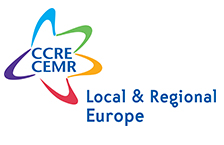History
The town twinning movement started very soon after 1945, with the passionate support of mayors and citizens who vowed that Europe should never again be torn apart by war. Most of the twinnings were between towns from countries that had, till recently, been divided by war. The promotion of this new twinning movement was one of the main priorities of the Council of European Municipalities (as it then was) in 1951, and the 1950s saw a huge increase in the number and range of twinnings.
Twinning is not limited to the countries of the European Union – countries like Switzerland and Norway have always been actively engaged. But it is true that twinning has played a positive role at each main stage of enlargement of the European Union from its original 6 member states.
In southern Europe, the restoration of democracy in Greece, Portugal and Spain in the 1970s, and their accession to the EU in the 1980s, led to a range of new twinning partnerships with the municipalities of those countries, as they prepared for and joined the EU.
And again, the changes in central Europe following the fall of the former communist governments from 1989 led to a proliferation of twinning links, leading up to the biggest-ever enlargement of the EU in 2004, and helping to bring the peoples of our long-divided continent together again.
Furthermore, since 1989 – and following a successful initiative of the European Parliament – the EU has provided an important financial support to twinning, especially where a European added-value can be shown.
It is fair to conclude that the twinning movement has for over 50 years made a really substantial contribution to the peaceful development of Europe, and to the successful integration of new countries into the Union.


